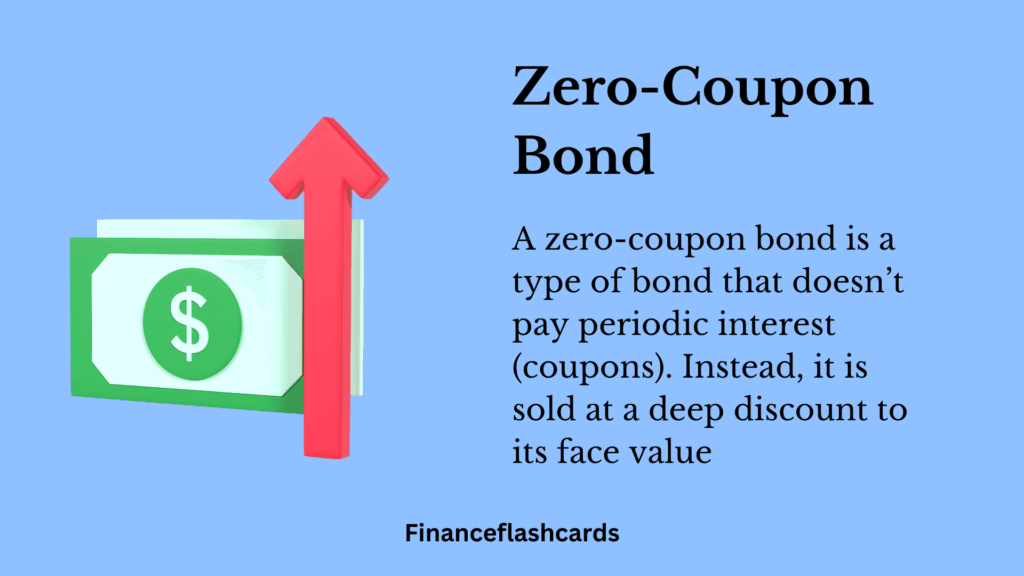A zero-coupon bond is a type of bond that doesn’t pay periodic interest (coupons). Instead, it is sold at a deep discount to its face value
Table of Contents
What is a Zero-Coupon Bond?

Understanding Zero-Coupon Bond
The time value of money is a concept that states that money is more valuable now than it will be in the future; for example, an investor would prefer to receive $100 today rather than $100 in one year. By receiving $100 today, the investor can put it in a savings account and earn interest (resulting in more than $100 in a year).
Extending the concept above to zero-coupon bonds, an investor who buys the bond now must be compensated with a higher future value. A zero-coupon bond must trade at a discount because the issuer must provide a return to the investor for purchasing the bond.
Zero coupon bonds typically have long maturity dates, with many lasting ten, fifteen, or more years. These long-term maturity dates enable investors to plan for long-term objectives, such as paying for a child’s college education. With the deep discount, an investor can put up a small sum of money that will grow over time.
How Zero-Coupon Bonds Work
Zero-coupon bonds are sold at a significant discount to their face value and repay the full face value when they mature. The investor’s profit comes from the difference between the buying price and the bond’s face value.
The total amount received at maturity includes the initial investment and the interest, which accrues over time and compounds semiannually/Annually at a specified rate.
For example, if a zero-coupon bond has a face value of $1,000 and matures in 5 years, you might buy it today for $700.
Over the 5 years, the bond doesn’t pay any interest, but at maturity, you get the full $1,000.
The $300 difference is your profit, which is effectively the interest earned over the bond’s life. This makes it simple and predictable for investors, especially for long-term savings goals.
The price of a zero-coupon bond is calculated by discounting its face value back to the present value using the bond’s yield to maturity (YTM).
Since these bonds do not pay periodic interest, the formula focuses solely on the compounding effect over time.
The formula is:
Price = Face Value / (1 + r)^n
Where:
- Price is the current value of the bond.
- Face Value is the amount the investor will receive at maturity.
- r is the annual yield (expressed as a decimal).
- n is the number of years until maturity.
Reinvestment Risk and Interest Rate Risk
Reinvestment Risk
Interest Rate Risk
This high sensitivity is due to the longer duration of zero-coupon bonds compared to coupon-paying bonds.

